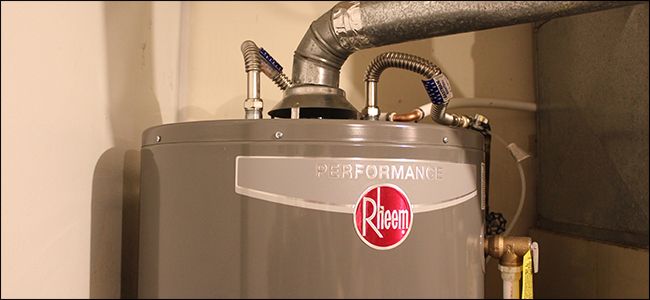Have you been on the lookout for facts and techniques involving Tips For Maintaining Your Hot Water Heater?

Hot water is crucial for day-to-day comfort, whether it's for a rejuvenating shower or cleaning dishes. To guarantee your warm water system runs efficiently and lasts much longer, regular maintenance is crucial. This post provides functional tips and understandings on how to preserve your home's warm water system to prevent disruptions and pricey fixings.
Introduction
Preserving your home's warm water system might seem overwhelming, but with a few basic steps, you can ensure it runs efficiently for many years ahead. This guide covers every little thing from understanding your warm water system to do it yourself upkeep tips and understanding when to call specialist help.
Value of Keeping Your Hot Water System
Regular upkeep not just extends the life expectancy of your warm water system yet also ensures it operates effectively. Disregarding upkeep can bring about decreased efficiency, higher energy bills, and even premature failure of the system.
Indications Your Hot Water System Demands Upkeep
Understanding when your hot water system needs focus can prevent major concerns. Look out for indications such as irregular water temperature level, strange noises from the heating unit, or corroded water.
Flushing the Hot Water Heater
Flushing your water heater eliminates debris buildup, enhancing effectiveness and lengthening its life.
Monitoring and Changing Anode Rods
Anode rods avoid deterioration inside the container. Examining and replacing them when worn is vital.
Facility Concerns Requiring Specialist Help
Instances include significant leakages, electric troubles, or if your water heater is regularly underperforming.
Routine Expert Upkeep Conveniences
Specialist maintenance can consist of thorough evaluations, tune-ups, and guaranteeing compliance with security standards.
Examining and Adjusting Temperature Setups
Readjusting the temperature level setups makes certain optimum efficiency and security.
Do It Yourself Tips for Upkeep
You can do numerous upkeep tasks yourself to keep your hot water system in leading problem.
Checking for Leaks
Frequently examine pipes and connections for leaks, as these can lead to water damages and greater expenses.
Comprehending Your Warm Water System
Prior to diving into maintenance tasks, it's useful to recognize the standard parts of your warm water system. Usually, this includes the water heater itself, pipelines, anode poles, and temperature level controls.
Monthly Maintenance Tasks
Regular regular monthly checks can assist catch minor concerns prior to they intensify.
Evaluating Pressure Relief Valves
Examining the pressure relief valve guarantees it operates correctly and protects against extreme pressure buildup.
Shielding Pipelines
Insulating hot water pipelines minimizes heat loss and can save power.
When to Call a Professional
While do it yourself maintenance is advantageous, some concerns require specialist experience.
Verdict
Routine maintenance of your home's warm water system is necessary for effectiveness, long life, and expense savings. By complying with these tips and understanding when to seek expert help, you can make sure a dependable supply of warm water without unexpected interruptions.
How to Maintain an Instant Hot Water Heater
Before tinkering with your hot water heater, make sure that it’s not powered on. You also have to turn off the main circuit breaker and shut off the main gas line to prevent accidents. Also turn off the water valves connected to your unit to prevent water from flowing into and out of the appliance. 2. When you’re done, you have to detach the purge valves’ caps. These look like the letter “T” and are situated on either side of the water valves. Doing so will release any pressure that has accumulated inside the valves while at the same time avoid hot water from shooting out and burning your skin. 3. When the purge valves’ caps are removed, you have to connect your hosing lines to the valves. Your unit should have come with three hoses but if it didn’t, you can purchase these things from any hardware or home repair shops. You can also get them from retail stores that sell water heating systems. Read the user’s manual and follow it to complete this task properly. When the hosing lines are connected, open the purge port’s valves. 4. You should never use harsh chemical cleaners or solutions when cleaning your unit. Make use of white vinegar instead. It should be undiluted and you’ll probably use about 2 gallons. 5. Now flush your water heater. This task should probably take about 40 minutes. We can’t give you specific directions for this because the procedure is carried out depending on the type, model and brand of your heater. With that being said, refer to the user’s manual. 6. When you’re done draining the unit, you have to turn off the purge port valves again. Remove the hosing lines that you earlier installed on each of the water valves. Put the valve caps (purge port) back in their respective places and be very careful so as not to damage the rubber discs that are found inside these caps. 7. Now that everything’s back in place, check your user’s manual again to find out how to reactivate your water heating system. 8. Once it is working, turn one of your hot water faucets on just to let air pass through the heater’s water supply pipes. Leave the tap on until water flows smoothly out of it. https://www.orrplumbing.com/blog/2014/september/how-to-maintain-an-instant-hot-water-heater/

As a passionate reader about How to Maintain a Hot Water Heater in a Few Simple Steps, I imagined sharing that excerpt was sensible. Those who enjoyed reading our blog entry if you please remember to share it. I treasure your readership.
Estimate Free